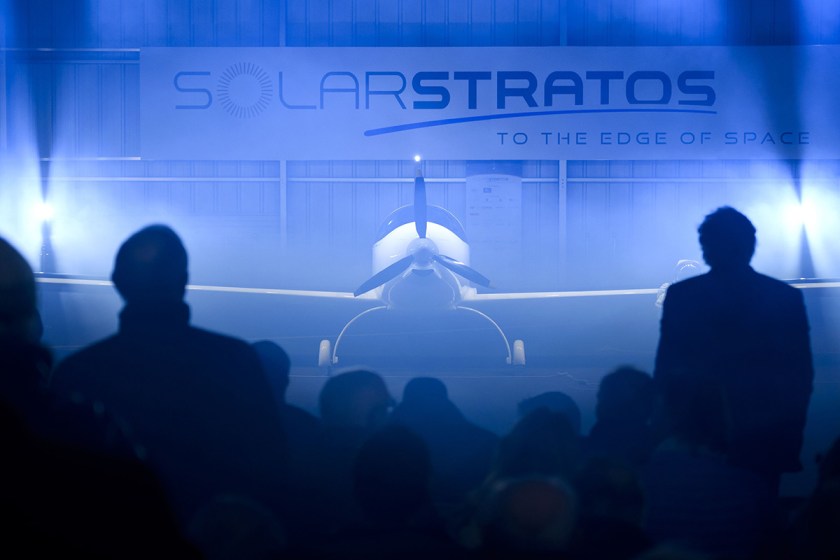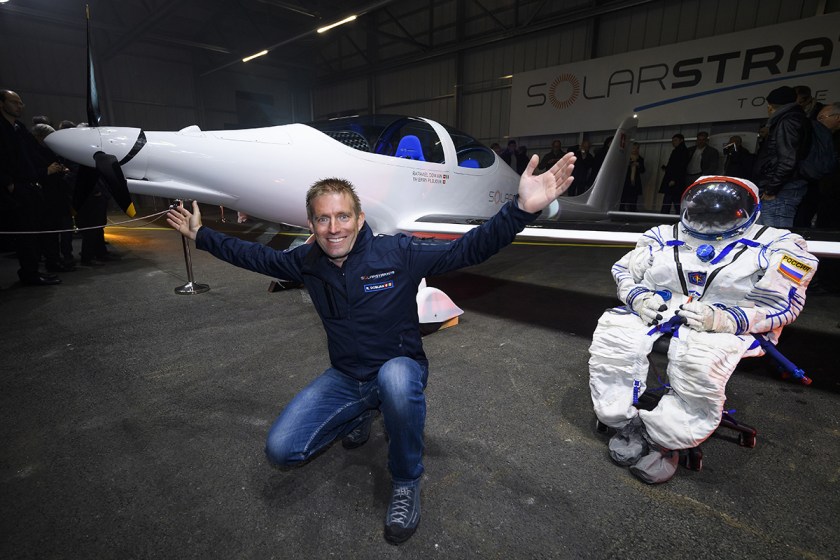
Just months after two Swiss pilots completed a historic around-the-world trip in a sun-powered plane, one of their fellow countryman has an even loftier goal for his own solar plane.
Raphael Domjan has unveiled his SolarStratos, a sleek, white two-seater aircraft with long wings, covered with 237 square feet of solar panels, that set to become the first manned solar plane to make a stratospheric flight.
“Our goal is to demonstrate that current technology offers us the possibility to achieve above and beyond what fossil fuels offer,” he said in a statement, after unveiling the plane at the Payerne airbase in western Switzerland.
“Electric and solar vehicles are amongst the major challenges of the 21st century,” said the 44-year-old, adding that the SolarStratos “can fly at an altitude of [82,000 feet].”
SolarStratos is scheduled to begin test flights next February, while medium altitude flights are planned for next summer, and the first stratospheric flights should take place in 2018, the statement said.
To keep down the weight, the plane will not be pressurized, and Domjan will wear a spacesuit, also powered by solar energy, which will also mark a world first, it added.
The statement also claimed the craft could “reach space.”
“Traveling to the stratosphere will take approximately five hours: 2.5 hours to reach space, 15 minutes of broad daylight and stars, then three hours to return to Earth,” it said.
The stratosphere lies above Earth’s lowest atmospheric layer, called the troposphere.

At middle latitudes, the stratosphere runs from a lower boundary of about 33,000 feet to an upper boundary of about 164,000 feet.
Aeronautics engineers use a rough benchmark called the Karman line, located at about 328,000 feet above sea level, for defining the boundary between Earth’s atmosphere and space.
The announcement came after two of Domjan’s compatriots, Bertrand Piccard and Andre Borschberg, completed the first-ever around-the-globe trip in a solar plane last July, in a bid to showcase the possibilities for the future of renewable energy.
Solar Impulse 2 circumnavigated the globe in 17 stages, covering 26,700 miles across four continents, two oceans and three seas, in 23 days of flying without using a drop of fuel.
Domjan meanwhile launched his SolarStratos project in 2014, two years after he became the first person to sail around the world in a fully solar-powered boat.
He insisted that the new aircraft’s ability to pierce the stratosphere “opens the door to the possibility of electric and solar commercial aviation, close to space.”
Until now, reaching the stratosphere has required large quantities of energy or helium. But the SolarStratos aircraft, could do so leaving only “the equivalent environmental footprint of an electric car,” the statement said.
The project “opens the door to new scientific knowledge, at an affordable price, [and the] exploration and peaceful use of our stratosphere,” said Roland Loos, who heads SolarXplorers, the organization in charge of developing the project. —Relaxnews
Watch a teaser video for SolarStratos below.
This article was featured in the InsideHook newsletter. Sign up now.





















